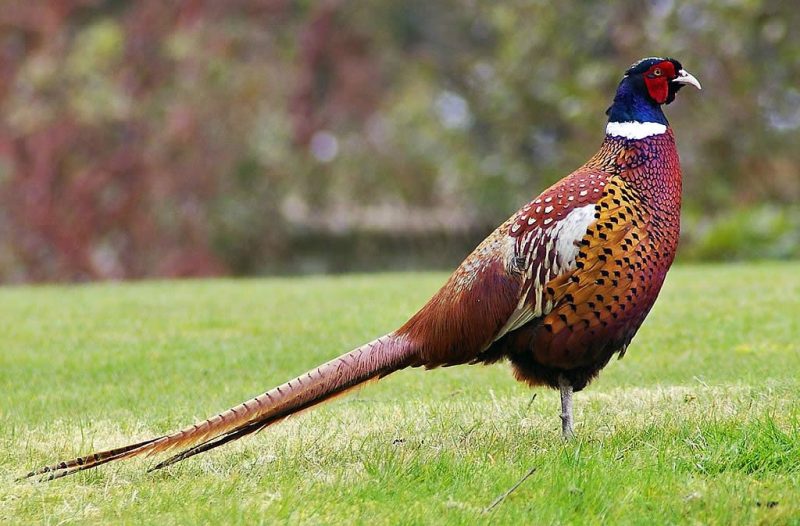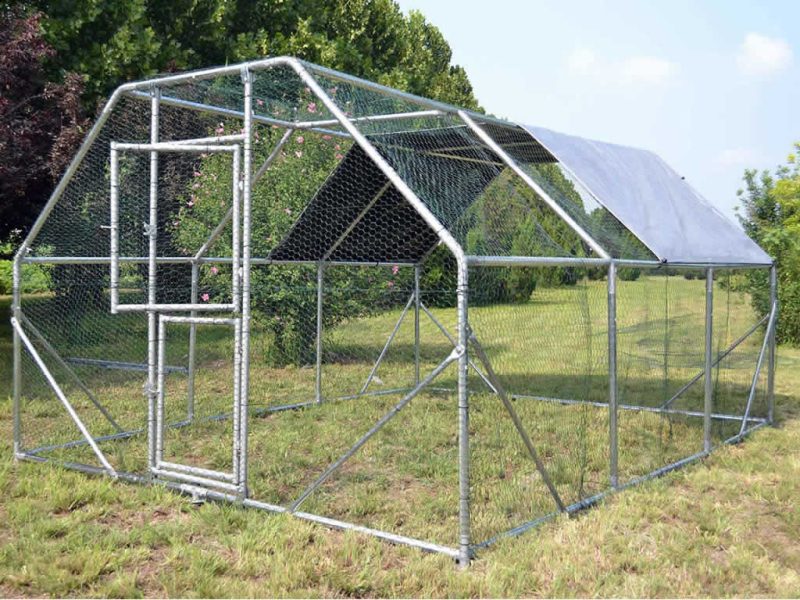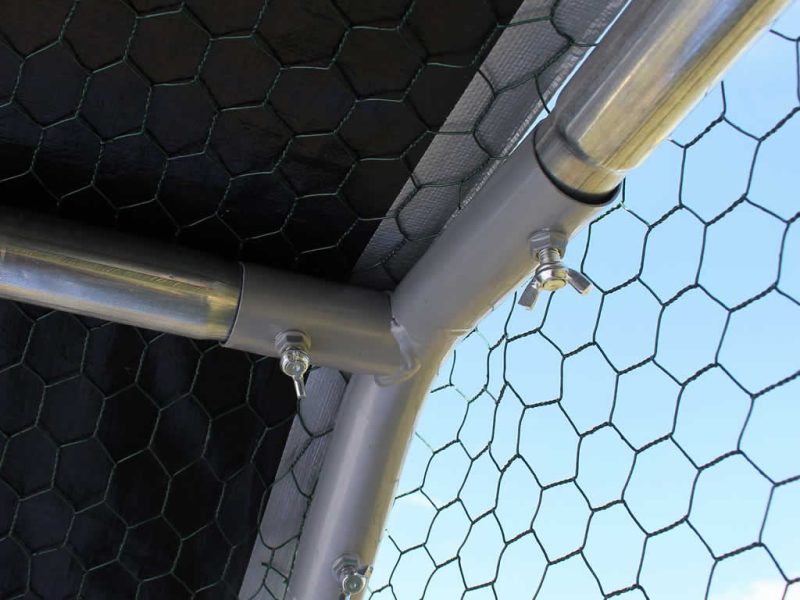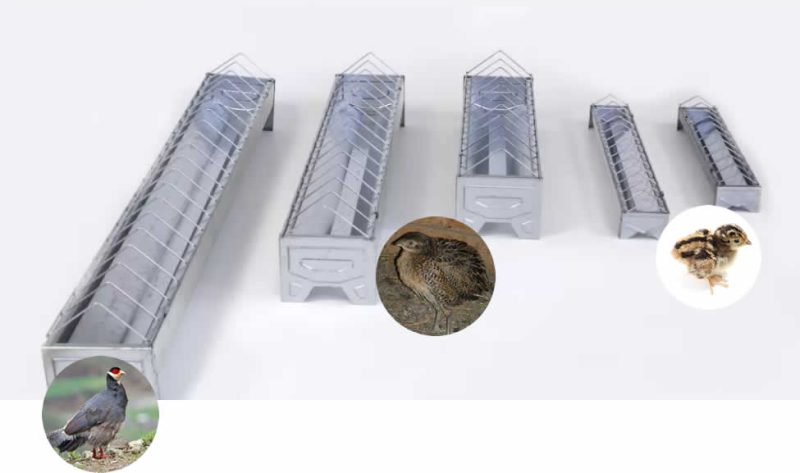Although it requires some special conditions, raising pheasants in households is an activity that you can start, especially if you already have experience with growing chickens. On top of that, if you have the necessary space to breed them and, of course, you have access to a sales market in the area where you are located, you can easily transform this hobby into a real and profitable business.
So without further ado, let’s start by finding out more about the history of the pheasant.
Contents
- Where did pheasants originally come from?
- Purchasing and Raising The Pheasants
- What to feed pheasants in winter, spring, summer, and autumn?
- What is the best food to feed pheasants?
- How To Breed and Incubate Pheasants
- Caring For Baby Pheasants
- Raising Pheasants For Meat on the Homestead
- Do pheasants get sick?
- Top Pheasant Facts
Where did pheasants originally come from?
The common pheasant is native to China and East Asia and is a wild migratory bird. It arrived in Europe around 1500 and was first introduced to the United States in 1881 in the state of Oregon.

Purchasing and Raising The Pheasants
The two most common breeds of pheasants used for breeding, both in household systems and in micro-farms, are the golden pheasant and the common hunting pheasant.
The Golden Pheasant has the following length: male 39 in (100 cm), female 26 in (65 cm). Tail length is 31 in (78 cm) for males and 14 in (36 cm) for females.
If you want to start a pheasant business, then it is indicated to buy around 28 pheasants (20 females and 8 males), at the age of first sexual maturity. It is best to buy them in the autumn season. In this way, the birds will get used to the new breeding environment faster.
Build an aviary or a cage for pheasants
To grow the pheasants you will need to build an aviary, consisting of a wooden case, on which will be spread a wire mesh net, with a mesh size of 0.6 x 0.6 in (1.5 × 1.5 cm).
At one end of the aviary will be a space for bird maintenance, built of wood, which in the cold period of the year will provide warm shelter for birds.
Some pheasant breeders prefer to use a synthetic net instead of a wire mesh as a cover because, in the case of a fight, the pheasant tends to fly vertically and can injure themselves.
For young birds, artificial lighting and warmth are recommended throughout the night.
The aviary should be located on dry, mostly sandy ground, with groundwater at great depths and a detour facing south or east. The interior will be painted with lime, while the exterior with oil-based paint.
In general, a family of pheasants needs a cage with an area of 4-6 ㎡ ( 7 x 7 or 7 x 10 ft; 2 × 2 or 2 × 3 m), and for large-tailed pheasants, this area needs to be slightly larger (13 x 13 up to 16 x 10 ft; 4 × 4 up to 5 × 6 m).
Part of the aviary should be covered with plastic or mats. This provides protection for the aviary against strong winds and the sun.
Male pheasants are very aggressive and irritable and beak through the wire fence. That is why the aviaries are additionally covered with an opaque coating (plastic, tin, PFL, mat) at a height of 18-20 in (45-50 cm) from the ground.
In the case of a permanent aviary, it is preferable for it to have warmer floors, made of brick or asphalt, covered with 2 in (4-5 cm) of sand. In the wooden maintenance space, perches will be made, on which the birds will sleep.
Some metal cages are available and very easy to install, at advantageous prices. In some cases, it may be cheaper to buy them than to build them from scratch.



In order to have the lowest possible feed losses, it is recommended to build special troughs for pheasants. These gutters can be made of dry planks, without knots, with a thickness of 0.4 in (0.5 – 1 cm). The trough must be long enough to provide an 8 in (20 cm) front for feeding a bird. The troughs will be installed at a distance of 3-7 ft (1-2 m) from each other.
They can also be purchased directly from the internet. Keep in mind that metal ones have a longer lifespan and are much easier to clean. Below you can find an example:

What to feed pheasants in winter, spring, summer, and autumn?
Pheasants raised in households need to be put first in a quarantine period of about a month. During the first week of quarantine, the birds’ diet will be monitored and consist mostly of cereals like whole grains and groats. If any problems occur, talk to your veterinarian.
Afterward, the nutrition will have to be quite varied. Therefore, the feed you will use for feeding pheasants should contain at least 20% protein, 1.7% calcium, and 0.9% phosphorus. Cereal, succulent feed, animal feed, grits, and premixes will be used. The transition from one type of feed to another will be made gradually.
According to pheasants’ breeders, it is important to feed the pheasants green fodder such as lettuce, fodder beets, as well as various insects, larvae, and ants, after the first 2 weeks of life. Then, all these can be alternated with cereals.
The pheasant is a bird that also feeds on the Colorado potato beetle. Thus, if you choose to grow pheasants with cut wings on agricultural land cultivated with potatoes, they will help reduce this known pest.
What is the best food to feed pheasants?
| Feed Type | Daily ration, ounces/ grams(winter) | Daily ration, ounces/ grams(summer) |
| Concentrates (corn, wheat, millet, barley, sorghum, legumes, sorghum) | 1.7 oz (50 g) | 1.6 oz (45 g) |
| Succulents (alfalfa, clover, peas, potatoes, carrots, cabbage, tomatoes) | 0.3 oz (10 g) | 0.7 oz (20 g) |
| Of animal origin (milk, cheese, insects) | 0.2 oz (6 g) | 0.3 oz (9 g) |
| Yeast | 0.1 oz (3 g) | 0.04 oz (1 g) |
| Fats (fish) | 0.02 oz (0.5 g) | 0.05 oz (1.5 g) |
| Vitamins, | 0.11 oz (3g) | 0.07 oz (2 g) |
| Salt | 0.0004 oz (0.1 g) | 0.0007 oz (0.2 g) |
In autumn and winter, the birds consume less fodder than in spring and summer. Thus, in spring and summer, a mature pheasant consumes on average 2.8 oz (80 g) of fodder, while in autumn and winter only 2.6 oz (75 g).
Pheasants should be fed twice a day: in the morning with soft feed, and in the second half of the day with cereal mixtures. If possible, add some raspberries, gooseberries, cranberries, blueberries, and sea buckthorn.
The male pheasants reach a weight of 2 – 4 lbs (1 – 1.8 kg) and the females around 1.7 lbs (0.8 kg).
How To Breed and Incubate Pheasants
If you are interested in having a pheasant farm then, inevitably, you need to know a few details about the reproduction of these birds. First, you will need to buy an egg incubator.
For reproduction, it is recommended to use only females aged 8-18 months and males aged 1-2.5 years. The term of exploitation of pheasants for reproduction will be 2-3 years.
At 14-20 days after mating in April, the female will start laying eggs, usually 13 to 16 eggs. The nest for the eggs should have a depth of 2-2.8 in (5-7 cm) and a diameter of 8-9 in (20-23 cm). By July, a female can produce about 30 eggs
The incubation period of pheasant eggs is between 21 and 25 days. In addition to the pheasants, chickens and turkeys can be used to hatch the eggs.
Caring For Baby Pheasants
In the first three months of life, baby pheasants should drink chamomile tea and eat boiled chicken eggs mixed with finely chopped greens. Then in 5 days, they can receive the wheat house boiled on milk, and in 8 days bran can be added in a quantity of 0.01 oz (0.3 g). Millet can be included after 12 days.
After one month, all baby pheasants should be fed small grains of wheat and oats, and in the second month, whole grains can be added. The birds will always receive a lot of quality greenery. The quality of the pheasant meat and its taste depend on the quality of the greens received.
When growing pheasants, especially for meat, it is good to ensure a temperature of over 18 degrees Celsius in the maintenance spaces.
Raising Pheasants For Meat on the Homestead
If you ask yourself “how healthy is pheasant meat“, you should know that pheasant meat has low-fat content and a high percentage of protein. Compared to other birds, pheasant meat has the highest protein content, about 26%, and the lowest fat content, only 0.98%.
Which One Should You Choose? Pheasant Meat Or Chicken. Pheasant meat has more protein, less fat, and less cholesterol than chicken, turkey, mallard, and beef. Moreover, it has much fewer calories than other meats. So, if you have the chance to choose between pheasant meat and chicken meat, you should choose pheasant meat.
Do pheasants get sick?
In general, pheasants are hardy birds and do not tend to get sick often. However, they are prone to diseases such as Botulism, Coccidiosis, owl typhoid, erysipelas, fowl cholera, avian tuberculosis, navel ill, crooked toes (young birds), Newcastle disease, eye infections, and worms. Therefore, pheasants should also be monitored and dewormed. Watch out for symptoms such as lethargy or not flying because these may be your first indication that a disease is present. Vitamins and mineral supplements are also recommended to prevent disease and strengthen their immunity.
Top Pheasant Facts
- Weight: Male ring-necked pheasants (roosters) average 2 to 3 lbs (0.9 -1.3 kg) while their female (hen) counterparts average 2 lbs (0.9kg).
- Length: Males measure 24 to 35 (61 to 89 cm) in length (a rooster’s tail accounts for more than 20 in (51 cm) of length); hens are smaller with a much shorter tail.
- Flight Speed: 38-48 mph (but can reach up to 60 mph when chased)
- Favorite Foods: Corn, seeds, insects
- Preferred Habitat: Undisturbed grass
- Average Nest Initiation: Early May
- Average Incubation Start: Late May
- Length of Incubation: 23 days
- Average First Hatch: Mid-June
- Average Clutch Size: 12 eggs
- Average Nest Success: 40-60%
- Average Hen Success: 50-70%
- Average Rate of Chick Survival: 50%
- Pheasant’s lifespan: Pheasants bred in captivity can live up to 18 years
- Pheasants don’t migrate
- The male and female pheasants look different
- Pheasants are polygynous
- Pheasants can swim
- Pheasants have excellent senses
- Pheasants don’t roost in trees
The business of raising pheasants is quite advantageous because it does not require a large budget to begin with, but it can bring significant profits in a short time by selling pheasant meat, or pheasant feather to those who make different objects such as fans and paintings.
If you are interested in which pheasant species there are and which are the most preferred for meat or feathers, please take a look at our list containing the description of 20 species.

